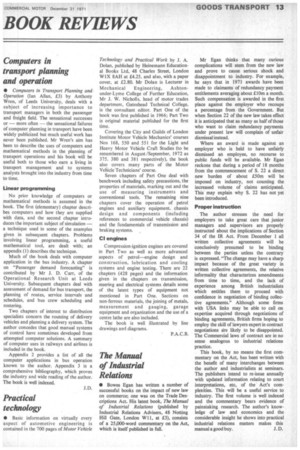Linear programming No prior knowledge of computers or mathematical methods
Page 15

If you've noticed an error in this article please click here to report it so we can fix it.
is assumed in the book. The first (elementary) chapter describes computers and how they are supplied with data, and the second chapter introduces the important subject of simulation — a technique used in some of the examples given in subsequent chapters. Problems involving linear programming, a useful mathematical tool, are dealt with; an appendix (1) describes the technique.
Much of the book deals with computer application in the bus industry. A chapter on "Passenger demand forecasting" is contributed by Mr J. D. Carr, of the Operational Research Unit at Leeds University. Subsequent chapters deal with assessment of demand for bus transport, the planning of routes, service intervals and schedules, and bus crew scheduling and rostering.
Two chapters of interest to distribution specialists concern the routeing of delivery vehicles and planning a delivery system. The author concedes that good manual systems of control have sometimes developed from attempted computer solutions. A summary of computer uses in railways and airlines is included in the book.
Appendix 2 provides a list of all the computer applications in bus operation known to the author. Appendix 3 is a comprehensive bibliography, which proves the industry and wide reading of the author. The book is well indexed.
J.D.












































































